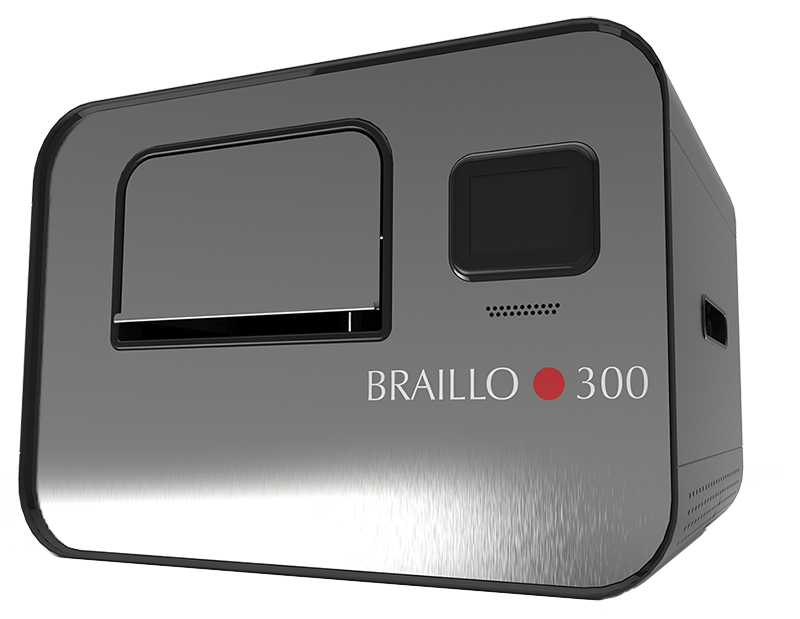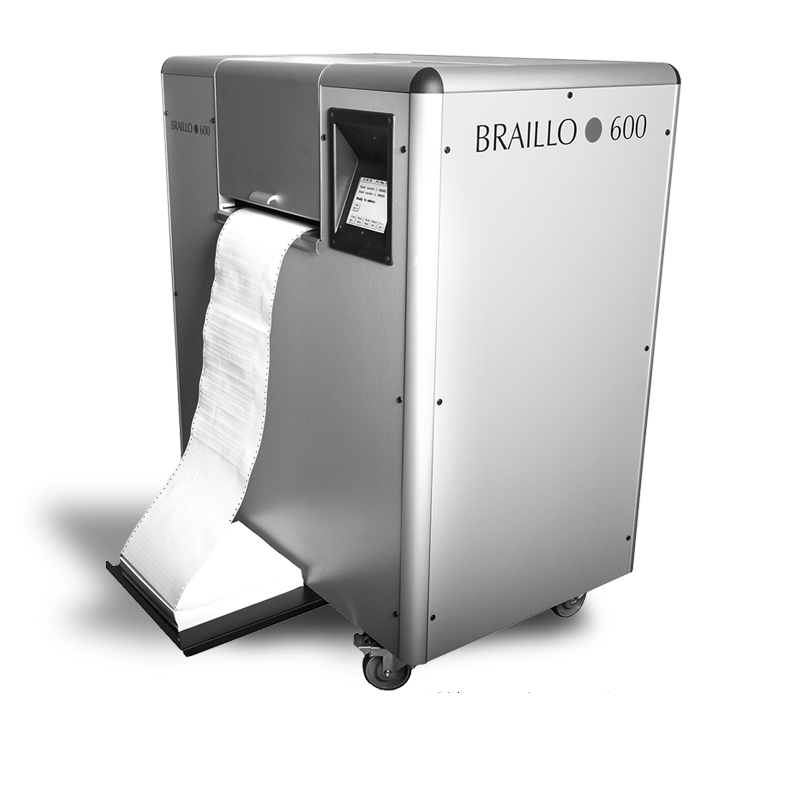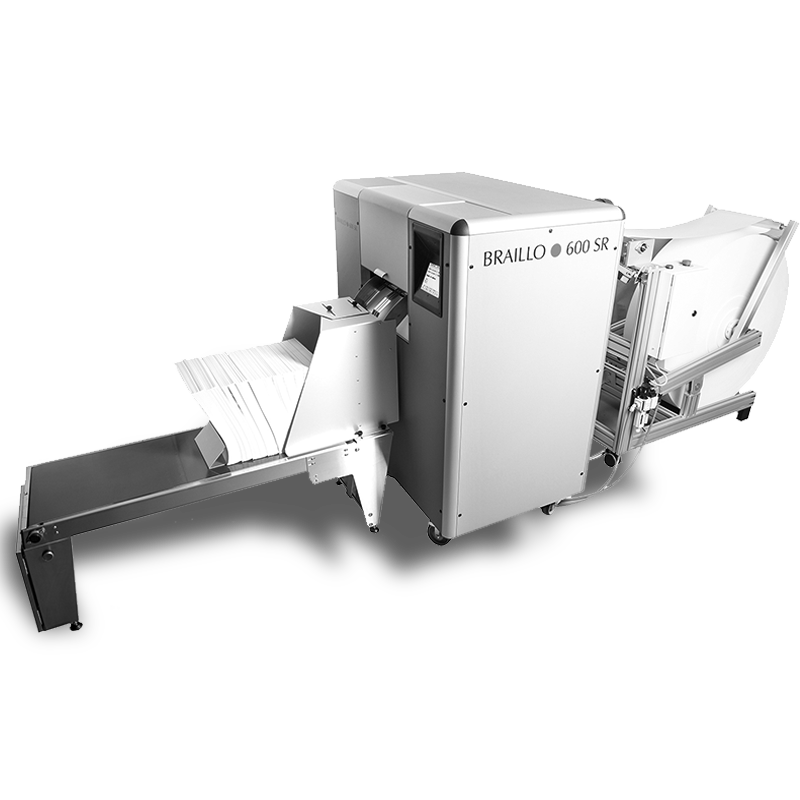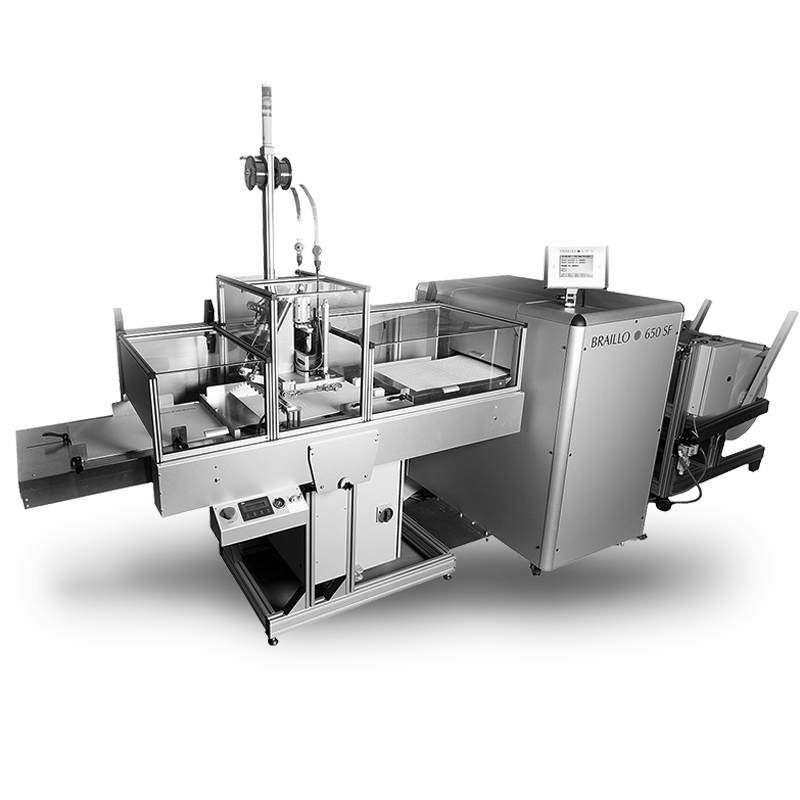Braille Printers
A Braille printer is an impact device that creates tactile dots on heavy paper, making written documents accessible to blind individuals. While there are several manufacturers of small desktop Braille printers, Braillo Norway focuses its efforts on producing the highest quality production Braille printers available on the market.
When considering the purchase of a Braille printer, it is important to consider the following points:
What are Braille printers being used for?
If the Braille printers primary use is for limited personal use or short-run light production, then a lightweight desktop printer is probably more than sufficient for your needs. This type of printer can easily accommodate a duty cycle of an hour or two per day. However, if you require a printer to run multiple hours per day, five days per week, or even two shifts five days per week, then a Braillo production rated machine is required to provide adequate service.
Quality of Braille printers:
Braillo printers are custom made, by hand, using state of the art manufacturing techniques. The finest grade metal is hand-machined to exact tolerances and then assembled at our facility in Stjordal, Norway. Component parts that are either manufactured in-house, or custom made by CE approved suppliers, further guarantee the quality of the finished product.
Braillo also manufactures its printers with such reliable mechanical parts that even older models can be upgraded with current electronics, features and speed levels—no other Braille printer manufacturer can offer such reliability and longevity in its products. Braillo embossers are built to last.
Braillo printers are capable of around-the-clock Braille production, and it is not uncommon to have a Braillo printer still in service after 20 years and millions of Braille pages produced.
We would be pleased to provide you with a list of references.
Quality of the Braille:
Braillo Braille is known as the “benchmark” for which all Braille printers are measured against. It consistently produces the highest quality Braille available. Consistent height and precise alignment allows for a perfectly formed Braille dot and Braille cell, facilitating easier reading.
The European Commission, National Library Service (U.S. Library of Congress), BANA and other governing agencies across the world have strict guidelines regarding Braille quality. Many Braille printers do not meet these specifications – be sure to request samples of the Braille output of any printer which you are considering to purchase, to ensure it meets your requirements. The dots should all be the same height, with equal spacing, and in the correct position.
We are happy to provide samples that are produced on the specific Braillo machine you are interested in purchasing.
Production Braille Printing —what is it?
When Braille is required to be produced in large quantities, day-after-day and week-after-week – that is production Braille. Braillo was established in 1980 with the development of the world’s first high-speed interpoint Braille printer. Since then, it has focused its efforts entirely on the production-level printer. Braillo is the true innovator and leader in this printer category.
Braillo printers are found in the largest Braille print houses, as well as in educational and government facilities throughout the world. Its newest printer, the revolutionary 650SF, is a printer that uses paper rolls to produce complete magazine and book formats that are covered and bound in one hands-free procedure.
All Braillo production printer models feature tractor feed or roll format paper options – the most reliable forms of paper handling. Tractor feed boxes generally contain 1000 sheets, and paper rolls equate to approximately 15,000 sheets. Compare this with cut sheet (sheet fed) printers, of which the largest has a capacity of 100 sheets. While they may be fast CPS-wise, it is difficult to call a cut sheet printer “production” when you have to stop every 10-15 minutes to load paper and/or remove paper jams. The actual page per hour or CPS rating falls dramatically when this reality is taken into account. There is simply no number of cut sheet printers or small desktop printers that can cumulatively compare to the efficiency, quality and output of a single Braillo printer of any model.
In addition to reliability and quality, you need your production Braille printer to be fast. Check with the National Federation of the Blind and other agencies across the world, who offer true, real-world speed test results of all Braille printers on the market.
What Kind of Braille Paper (format and weight):
Initially, Braille printers used only tractor feed/continuous Braille Paper. In an effort to lower production costs for Braillo’s customers, it was the first company to introduce roll feed printers. There is no question that using tractor feed paper is still the most reliable method for production printing, and it is still the most widely used format today. Tractor fed printing ensures that the paper is correctly fed into the printer and that the user doesn’t have jamming-related errors.
Using rolls is also an extremely reliable way of producing. It is less expensive than using tractor-feed and you don’t have to change paper frequently.
In a Braille production environment, cut sheet paper is not recommended, nor efficient. These embossers only allow for a maximum of 50-100 single sheets to be loaded at a time, and the paper can easily get jammed in the embosser.
The recommended paper weight is 140/150 GSM or 100 LB – anything less than that won’t withstand the heavy demands of Braille production or repeated reading by a blind user.
Be cautious of using traditional copy paper or paper from a local office supply store. This paper is too thin and as soon as it goes through the embosser, the Braille pin will poke right through the paper or after the first time a finger slides over the dot, it flattens out. Basic office supply paper is too weak for Braille and thus, a disservice to the blind reader.
Ask to see a sample of standard Braille Paper vs traditional copy paper – Braillo will be happy to provide you with both so you can feel the comparison.
Translation Software for Braille Printers:
Transcribers and proofreaders work extremely hard to ensure that the file they’re sending to the Braille printer comes out correctly. The only way to properly ensure Braille translation comes from using a professional translation software. Braillo will gladly provide a list of recommended software programs.
Printing directly from your computer, phone or tablet without such software simply is not productive if the Braille output is incorrect, as there are too many variables (Grade 1 vs. Grade 2 vs. Grade 3, 6 dot vs. 8 dot, languages, punctuation, etc).
Braille Printer Support:
Braillo offers support via telephone, email, YouTube videos and on-site repair by either Braillo staff, or our network of factory-trained technicians world-wide. Braillo offers training sessions across the world throughout the year, in addition to other Braille workshops. The investment in a Braillo printer (or any Braille printer) is a big one, so please rest assured that it is Braillo’s highest priority to ensure that your equipment is running properly and that you are satisfied with your investment.







